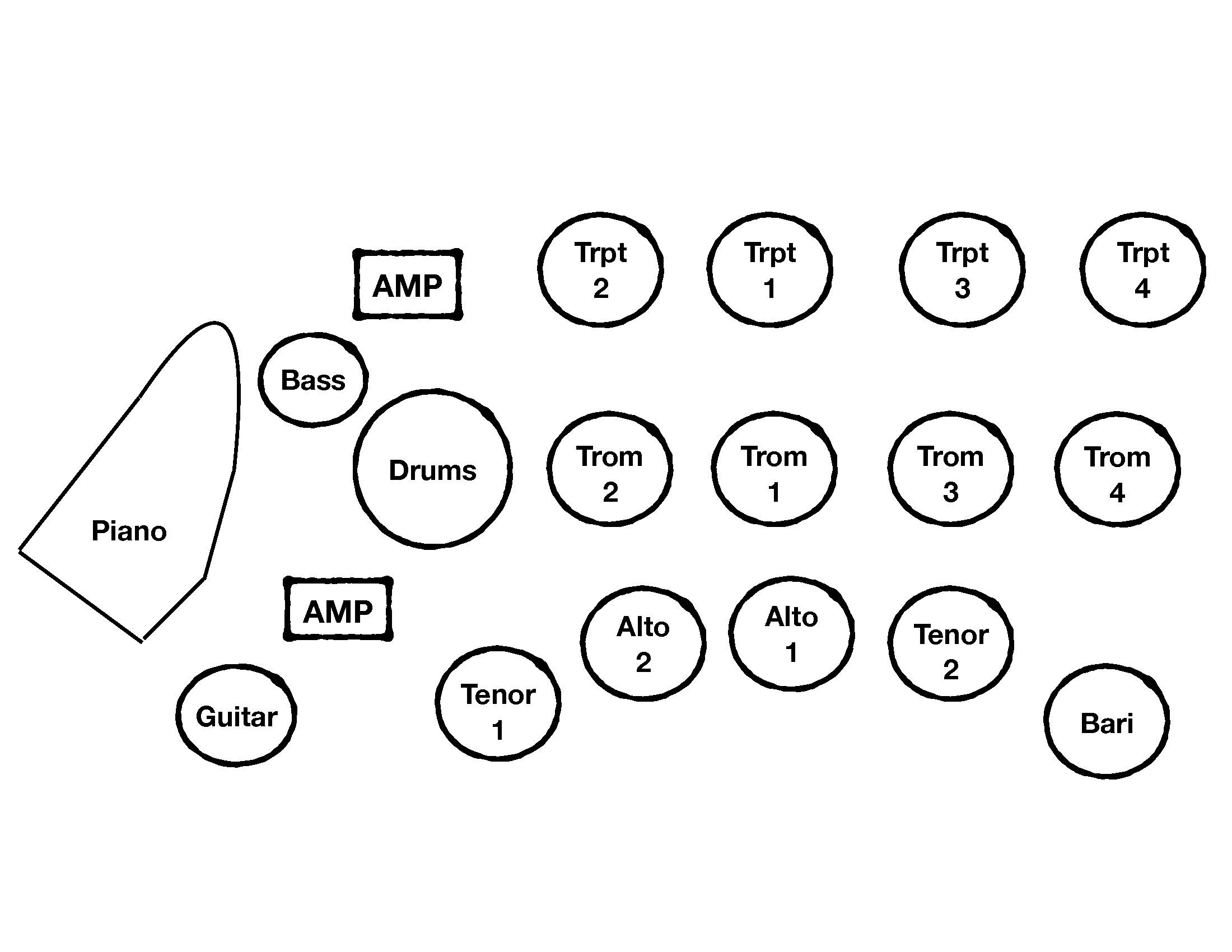The traditional jazz ensemble set-up has the saxophones in the front. Behind the saxophones is the trombone section and behind the trombones is the trumpet section. The baritone saxophone and bass trombone should be on the opposite side of the string bass for balance. The rhythm section is on the band’s left. The rhythm section should be set-up so all students within the section have eye contact with each other. In each of the horn sections the lead or first player is in the middle, putting the lead trombone and trumpet directly behind the lead alto sax.
The solo parts (2nd trumpet and 1st tenor sax) are placed closest to the rhythm section (so they can hear the changes). The drum set is in the center of the rhythm section and is surrounded by the bass, piano, and guitar as if the bass were at the end of the trumpet section and the guitar at the end of the saxophone section. Having each section sitting close together will make it easier for students to hear each other and play together.
Jazz Band Rehearsals
jazz bands typically should rehears 2 days a week for 2 hours after school at minimum. The first rehearsal day should be for sectional rehearsals. The second rehearsal day should be for the full ensemble. On sectional rehearsal days the students are broken down into small group sections in order to shed their parts (focus on learning and correcting notes, rhythms, dynamics, and articulations). During the full ensemble rehearsal later that week the students will then bring the elements learned in their sectional rehearsal to the full ensemble.
Learning to Lead As Well As Follow
Before breaking down into sections, I would recommend beggining with a large group warm-up and review with the students the sections of music that they to need work on. Then divide the students into sections based on instrumentation (Saxophone, Upper Brass, Low Brass, Rhythm Section) and separate them into different classrooms or learning spaces.
Sectional rehearsals provide the older students with the opportunity to take on a leadership role. The goal of the sectional rehearsal is to have students work out the problem sections of their music. Sectional rehearsals also provide students with the experience of learning how to help each other improve (peer mentoring) the quality of the performance of their section.
The role of the music teacher at sectional rehearsals is to rotate between each sectional group to help model and to provide direction concerning how to rehearse; how to manage the section and how to moderate conflicts within the section in a way that will help promote a sense of growth and well-being among the students in the ensmeble.








